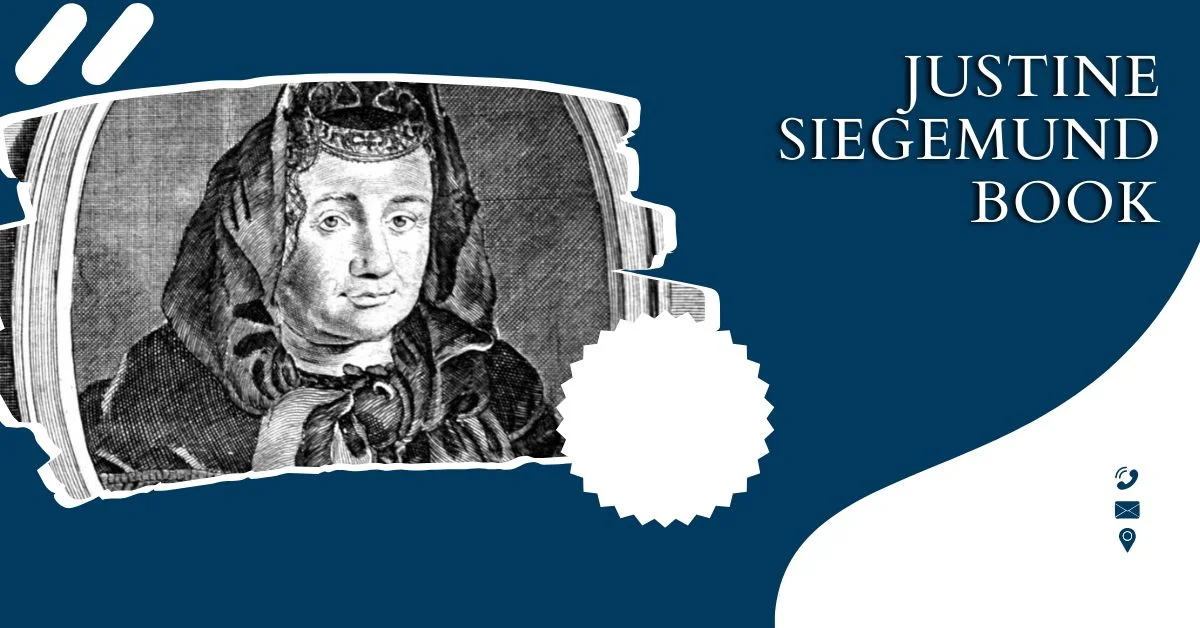The Silesian midwife Justine Siegemund (or Siegemundin) was born on December 26, 1636. She authored the first German medical literature written by a woman, The Court Midwife (1690), which focused on obstetrics.
Details About Justine Siegemund Book
In 1690, with the publication of The Court Midwife, Justine Siegemund established herself as a major personality in seventeenth-century Germany. This book offered more than just a how-to guide for becoming a midwife; it also detailed the societal pressures that came with the job.
As a prominent writer, midwife, and advocate, Justine helped elevate the profession of midwifery to a level of respectability that was unusual for German women at the time. This is the first book to be written in English, and it features riveting descriptions of childbirth alongside sworn statements from previous patients and a short autobiography.
The fact that it was the only work produced at the time by a woman also made Justine a spokeswoman for the profession of midwifery. The world was better for having known Justine Siegemund, and her legacy lives on thanks to her extraordinary achievements.
What led Justine Siegemund to pursue a Career in Midwifery?
After having a prolapsed uterus incorrectly identified as pregnancy by unqualified midwives, Siegemund decided to pursue a career in the field. Because of this gap in information, she decided to study to become a midwife educator. She trained under an experienced midwife and rapidly gained a reputation for helping expectant mothers have healthy babies.
Siegemund began her career as a midwife in 1683, when she was chosen City Midwife of Lignitz. She eventually moved to Berlin, where she became the Court Midwife for the royal family. Siegemund’s book influenced the way obstetricians were viewed at the time, and her work was recognized throughout Europe.
Check out the following links for more of our Justine Siegemund coverage:
- Justine Siegemund Cause of Dea†h: How did The Famous German Book Writer Die?
- When did Justine Siegemund Born, The Lady Midwife of the 17th Century?
What role did Justine Siegemund’s own health issues play in influencing her writing?
Justine Siegemund, who was born in Rohnstock, Lower Silesia, in 1636, didn’t set out to revolutionize childbirth. Instead, it was her personal health problems that prompted her interest in women’s bodies.
According to a report in the American Journal of Public Health, Siegemund’s uterus had prolapsed due to a weakening of the supporting muscles and ligaments. This would have given Siegemund pregnancy-like symptoms, such as a heaviness in her lower abdomen, and led numerous midwives to incorrectly diagnose her.
Siegemund was so frustrated by their treatment that she decided to become a midwife herself. Word-of-mouth was the primary means of disseminating information about delivery methods back then, and many midwives guarded their methods jealously. But Siegemund learned to read and write on her own, and she began having babies about the year 1659.
Siegemund was known for delivering babies without the use of medications or equipment. She started off working with low-income women, but her reputation spread quickly, and she was soon asked to assist women from affluent backgrounds as well. In 1701, Justine Siegemund was called to Berlin to serve as the official royal midwife after knowledge of her skill had spread.
If you want to read out more articles like this then you can join us on our Twitter account.
